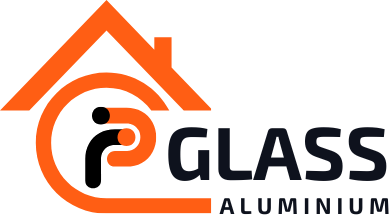Hollow Skylight in Malaysia
Have you ever walked into a building and felt an instant sense of awe as natural light flooded the space from above? That’s the magic of hollow skylights, and in Malaysia, they’re revolutionizing architectural design.
Imagine transforming dark, stuffy interiors into bright, airy spaces without skyrocketing energy bills. That’s exactly what hollow skylights are doing across Malaysia’s urban landscape. From modern office buildings to traditional homes, these innovative lighting solutions are not just illuminating spaces—they’re reshaping the way we experience architecture.
In this post, we’ll dive deep into the world of hollow skylights in Malaysia. We’ll explore their unique design, installation process, and maintenance requirements. You’ll discover how they’re being implemented in real-world projects, their cost-effectiveness, and their positive environmental impact. Whether you’re an architect, homeowner, or simply curious about sustainable design, prepare to see Malaysian architecture in a whole new light.
Understanding Hollow Skylights

Definition and basic concept
Hollow skylights are innovative architectural elements that allow natural light to penetrate buildings through the roof. They consist of a transparent or translucent dome on the exterior and a diffuser on the interior, with an air gap in between. This design maximizes daylight while minimizing heat transfer, making them ideal for tropical climates like Malaysia’s.
Hollow Skylights in Malaysian Architecture

Traditional vs. modern applications
Hollow skylights in Malaysian architecture have evolved from traditional atap roofs to modern glass domes. Traditional applications focused on natural ventilation and diffused light, while modern designs prioritize energy efficiency and aesthetics. Here’s a comparison:
| Aspect | Traditional | Modern |
|---|---|---|
| Material | Palm leaves, wood | Glass, polycarbonate |
| Design | Simple, functional | Complex, decorative |
| Light control | Limited | Advanced (e.g., smart tinting) |
Modern applications often integrate solar panels and rainwater collection systems, blending tradition with sustainability.
Design and Installation Process
A. Structural requirements
- Load-bearing capacity
- Waterproofing measures
- Thermal insulation
B. Material selection
| Material | Durability | Light Transmission | Cost |
|---|---|---|---|
| Acrylic | Medium | High | Low |
| Glass | High | Very High | High |
| Polycarbonate | High | Medium | Medium |
C. Customization options
- Shape variations
- Tinting and coating options
- Size customization
D. Professional installation tips
- Proper sealing techniques
- Ensuring proper drainage
- Adherence to local building codes
Designing and installing hollow skylights requires careful consideration of structural integrity and material choice. Customization options allow for unique aesthetics, while professional installation ensures longevity and performance. Now, let’s explore the maintenance and longevity aspects of hollow skylights.
Maintenance and Longevity

Cleaning techniques
Regular maintenance ensures the longevity of hollow skylights. Here are essential cleaning techniques:
- Use mild soap and water
- Avoid abrasive materials
- Clean both interior and exterior surfaces
| Frequency | Task |
|---|---|
| Monthly | Dust removal |
| Quarterly | Deep cleaning |
| Annually | Professional inspection |
Case Studies: Successful Implementations

A. Residential projects
- Modern bungalow in Kuala Lumpur
- Terraced house in Penang
- Luxury villa in Johor Bahru
| Project | Skylight Type | Benefits |
|---|---|---|
| Bungalow | Dome | Increased natural light |
| Terraced | Flat | Energy savings |
| Villa | Pyramid | Enhanced aesthetics |
B. Commercial buildings
Hollow skylights have transformed Malaysian office spaces, enhancing productivity and well-being. Shopping malls utilize these features to create inviting atmospheres, while hotels incorporate them for a luxurious ambiance. Now, let’s explore their impact on public spaces.
Cost Analysis and ROI
Initial investment
The initial cost of hollow skylights in Malaysia varies based on size and complexity. A typical installation ranges from RM5,000 to RM15,000. Factors influencing price include:
- Materials used
- Size of skylight
- Installation complexity
- Labor costs
| Factor | Cost Range (RM) |
|---|---|
| Materials | 2,000 – 8,000 |
| Installation | 3,000 – 7,000 |
Environmental Impact
Reduced carbon footprint
Hollow skylights significantly reduce energy consumption by allowing natural light to penetrate deeper into buildings. This reduces the need for artificial lighting and cooling, lowering electricity usage and carbon emissions. Studies show that well-designed skylights can cut lighting energy use by up to 80% in commercial buildings.
| Benefit | Impact |
|---|---|
| Energy savings | Up to 80% |
| Carbon reduction | Significant |

Hollow skylights have emerged as a transformative architectural element in Malaysia, offering a perfect blend of natural light, energy efficiency, and aesthetic appeal. From their innovative design and installation process to their long-term benefits and environmental impact, these skylights are revolutionizing the way Malaysians approach building design. Case studies of successful implementations across the country demonstrate the versatility and effectiveness of hollow skylights in various settings.
As Malaysia continues to prioritize sustainable architecture, hollow skylights present a compelling solution for both new constructions and renovations. With their ability to reduce energy costs, improve indoor environments, and contribute to a building’s overall sustainability, the return on investment for hollow skylights is clear. By embracing this technology, Malaysian architects and homeowners can create spaces that are not only visually stunning but also environmentally responsible and economically sound.





Comments are closed